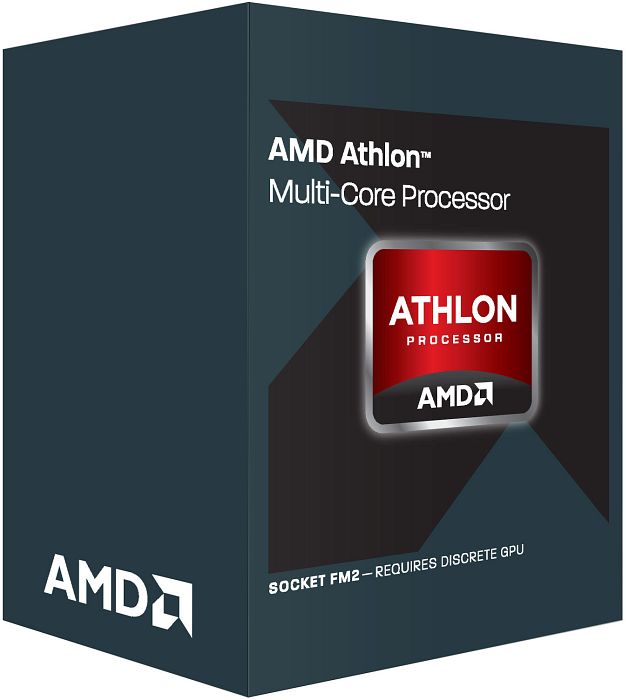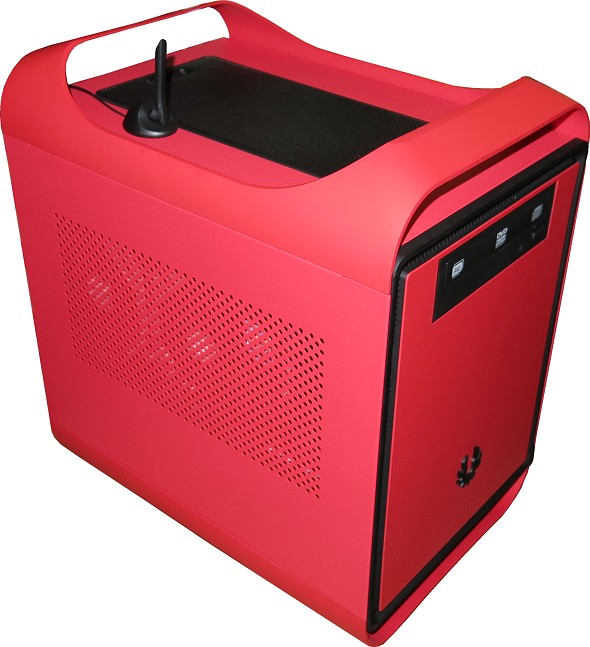Build A Balanced AMD-Based Gaming PC On A Budget
We’re revisiting an age-old question with a modern twist: can you build a balanced gaming PC with a sub-$100 CPU and not be limited by graphics performance? When you pick the right parts, a capable machine is easily within reach for very little money.
Building An Entry-Level Gaming PC
Although we spend much of our time talking about and testing ultra-high-end hardware, sometimes it can be far more special to create something magical on a budget. Given a shift away from the high-end segment (but an eagerness to remain relevant to enthusiasts), AMD has a handful of inexpensive multiplier-unlocked models that power users can tweak without the burden of on-die graphics eating into the thermal budget.
For example, the Athlon X4 750K sports two modules based on the Piledriver architecture. Each module includes a pair of integer cores and a shared floating-point unit. Typically, you'd expect to find this configuration on AMD's APUs belonging to the Trinity family, with 100 W thermal ceilings and Radeon graphics. In this case, however, the company disables the GPU altogether, dedicating the 100 W ceiling to its x86 cores.
Learn About Piledriver
For more information about AMD's Piledriver architecture, check out AMD FX-8350 Review: Does Piledriver Fix Bulldozer's Flaws?
Newegg sells the Athlon X4 750K for $80, which is a solid bargain since that K suffix indicates an unlocked multiplier that's easy to overclock. And once it's properly tuned, it has little trouble keeping up with the $125 Core i3-3220.
Just that one well-thought-out choice already saved us $30 on our budget-oriented build. We can use that money elsewhere. But how much more can we save if we similarly think through each one of the components in an inexpensive configuration?
It All Depends on the Right Combination
Bottlenecks are a bad thing, regardless of whether you're looking at top-end gear or more mainstream hardware. In fact, a limitation is more likely to adverse the value-oriented setup, since its absolute performance is lower to begin with. We already know that it's possible to build a well-balanced system at a very low price. So, our first order of business after tapping the Athlon X4 750K has to be finding a discrete graphics card able to complement that CPU. The goal is to find something with enough 3D alacrity to let us turn on more advanced detail settings, like anti-aliasing.
Get Tom's Hardware's best news and in-depth reviews, straight to your inbox.
Using our Graphics Card Charts, we poked around for the right board able to game comfortably at 1920x1080. And our main requirement is that frame rates remain playable.
Most CPU reviews are written using high-end graphics cards to deliberately isolate processor performance, alleviating GPU bottlenecks. In theory, that's admirable. But applicability to the real world is limited, since you'd never drop a GeForce GTX 780 Ti into a motherboard with one of these Athlon X4s in it. So, we turn the tables and start at the bottom of the graphics hierarchy instead.
We'll Pick Two Solutions: Bare Minimum Or A Step Up
During the course of our story, we'll naturally be considering the value of the parts we pick. The plan is to present two different configurations at a couple of price points. First, we'll look at the product of using the least-expensive components possible. The second machine puts a bit more emphasis on quality and looks.
Everyone's needs (and budgets) are different, so you may prefer one system over the other. Or, perhaps a combination of their parts is more suitable. Of course, less expensive components don't necessarily have to be lower-quality or ugly. Being frugal can even be a strength, so long as you're exercising that value in the right places, and not indiscriminately across the board.
Current page: Building An Entry-Level Gaming PC
Next Page The Quest For The Right Graphics Card
Igor Wallossek wrote a wide variety of hardware articles for Tom's Hardware, with a strong focus on technical analysis and in-depth reviews. His contributions have spanned a broad spectrum of PC components, including GPUs, CPUs, workstations, and PC builds. His insightful articles provide readers with detailed knowledge to make informed decisions in the ever-evolving tech landscape
-
esco_sid It does not make sense to spend $80 on a case for a budget entry system why all the focus on eye candy at additional cost ? for the money you can get better hardware such as fx-6300 setup with better graphics card that's what i would be worried about while on a budget.Reply -
Memnarchon The minimum version is a trully great budget build, while the Red Devil is more ITX luxury build. An SSD and $80 case on a gaming budget? ;pReply -
Zeh Nice article, but I guess it's really important for readers to understand that the extra stuff is completely optional and the main point is #415 gets you a very decent (if not Good) gaming PC.Reply
We have $315 spent on eye candy, SSD and a little bit more thermal headroom, which is 76% of the 'cheap' budget.
Personally, I would only get the SSD. Maybe the MB with Wifi if I'm building something really small and would like to avoid cable clutter. Definately not gonna spend $50 on a bit more mhz, neither $55 on a case for cheap hardware, -
ddpruitt Now the trick is to benchmark both systems. Let's see if the "Bare Bones" build can keep up with the eye candy Red Devil build. I doubt there's a huge difference in performance, or perceptible noise levels. For a system that costs almost twice as much you might be able to be handle cost by going for functionality instead of looks. 240Gb SSD (or potentially more), better CPU or better GPU, though to each his own.Reply
For bonus points it would be nice to compare the budget build to a console in the same price range, but alas an Apples to Apples comparison isn't possible. -
Onus I really want to like articles like this. I lurk at the "budget" end of the spectrum myself, and some of the analysis on this one is really good, but I absolutely agree with Zeh; so much optional stuff was covered that it really distracted from what I expected to be the main point.Reply
I would have liked to have seen the bottom dollar build done first, followed by a discussion of what upgrades or enhancements might be substituted.
Also, at least a few benchmarks are needed, if only to show that yes, this is a competent gamer, especially if "good" but less-than "UltraMaxOhWOW" settings are used. -
vertexx Nice article. This is definitely the way to present gaming system design, especially with graphics card selection based on CPU scaling. I really think the "Best Gaming CPU/GPUs for the $$" series could benefit from this approach. Instead of separating the CPU/GPU, you really want to look at the best combo's for the $$.Reply
I think you handled the "baseline" vs. "Red Devil" options well. The great thing about a budget build is not necessarily being a race to the bottom, but it's all about saving money so you can spend some on smart components that will add to the enjoyment of building and running the PC. With the case selection, that's a smart selection. Who wants to build a PC in a case that you're going to want to replace in 6 months? Perhaps you could have offered a cheaper alternative, but I like the choice to spend the extra $$ on the case.
The only letdown I have is on memory scaling. There is a very long thread of debate in the Best CPUs for the $$ article about how strongly memory scaling impacts the 760K CPU because of its lack of L3 cache. The key seems to be that you also need to overclock NB freq. Because there are simply no reviews out there with a fully overclocked 760K platform, I was really hoping when I saw this article that the memory scaling would have been included.
@Damric - if you're reading this article, perhaps you can chime in.
Overall though, this is a great read! I can't wait to see a OC'd 760k vs. the upcoming OC'd Pentium in a budget shootout. If this is done, you really need to look at game selection and analyze games that optimize for more cores vs. the single-threaded performance in which the Pentium will excel.
-
Falcorion On the GPU selection page at the top it should read "Finding the Right GPU" not "Finding the Right CPU".Reply
Also, is there a reason we completely dismissed the r7 265?
In fact it seems like you looked over a LOT of good value choices for a budget system.
Tom's Hardware selections for a lot of their tests lately have had weird hardware choices.... -
Falcorion Also, I wanted to add that your builder installed the PSU the wrong way, the fan should be facing the vent on the bottom, not the metal plate below the motherboard.Reply


